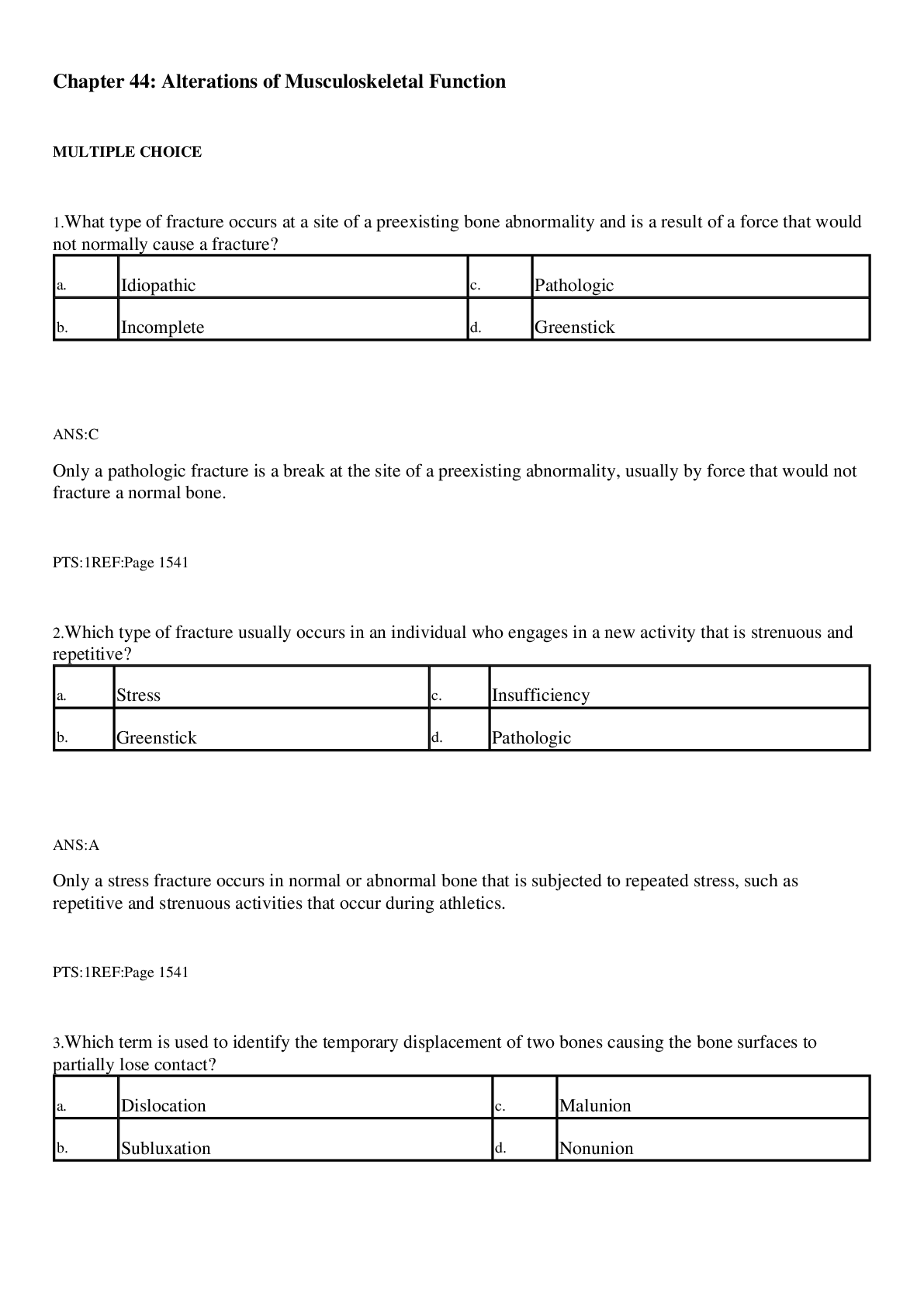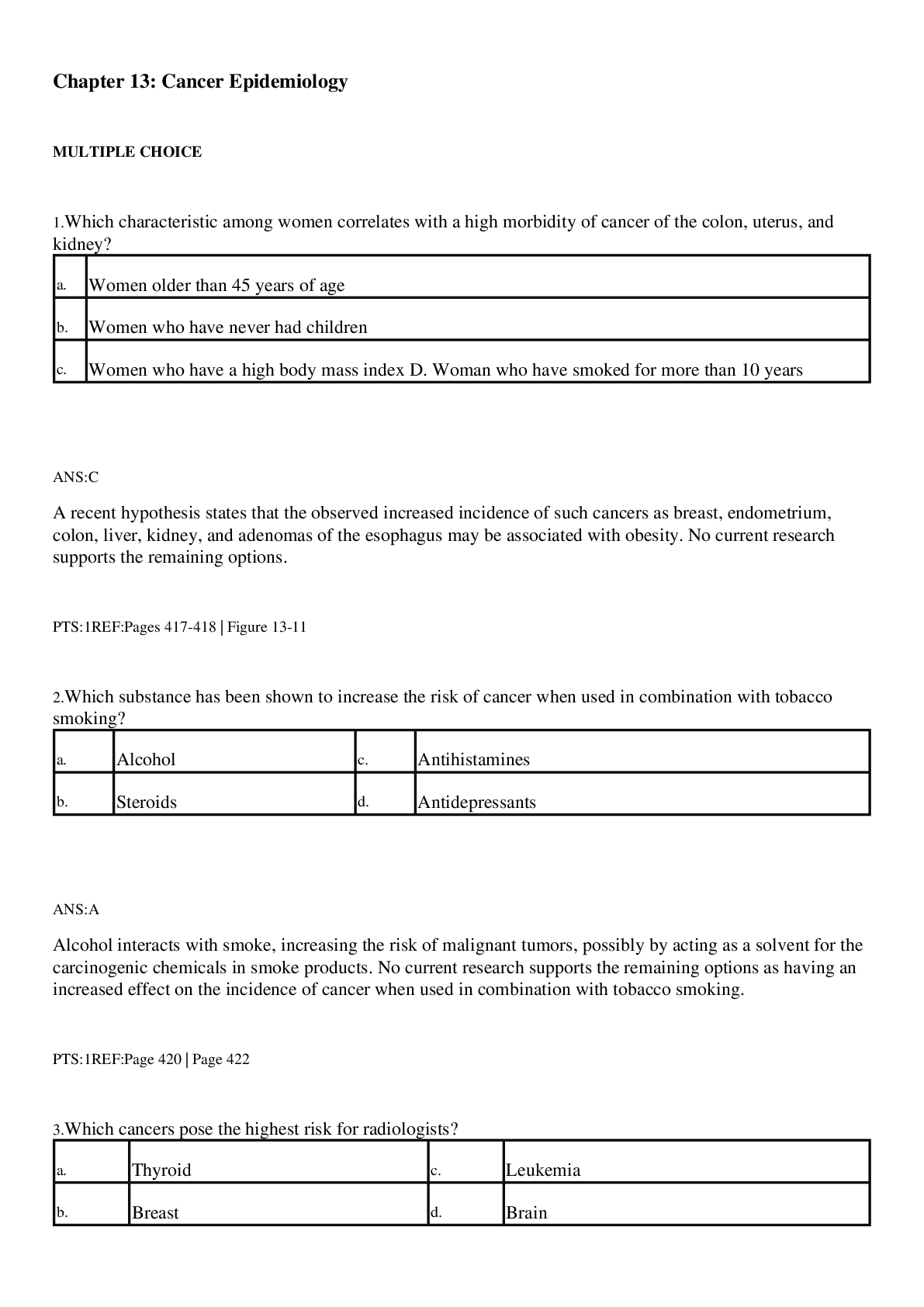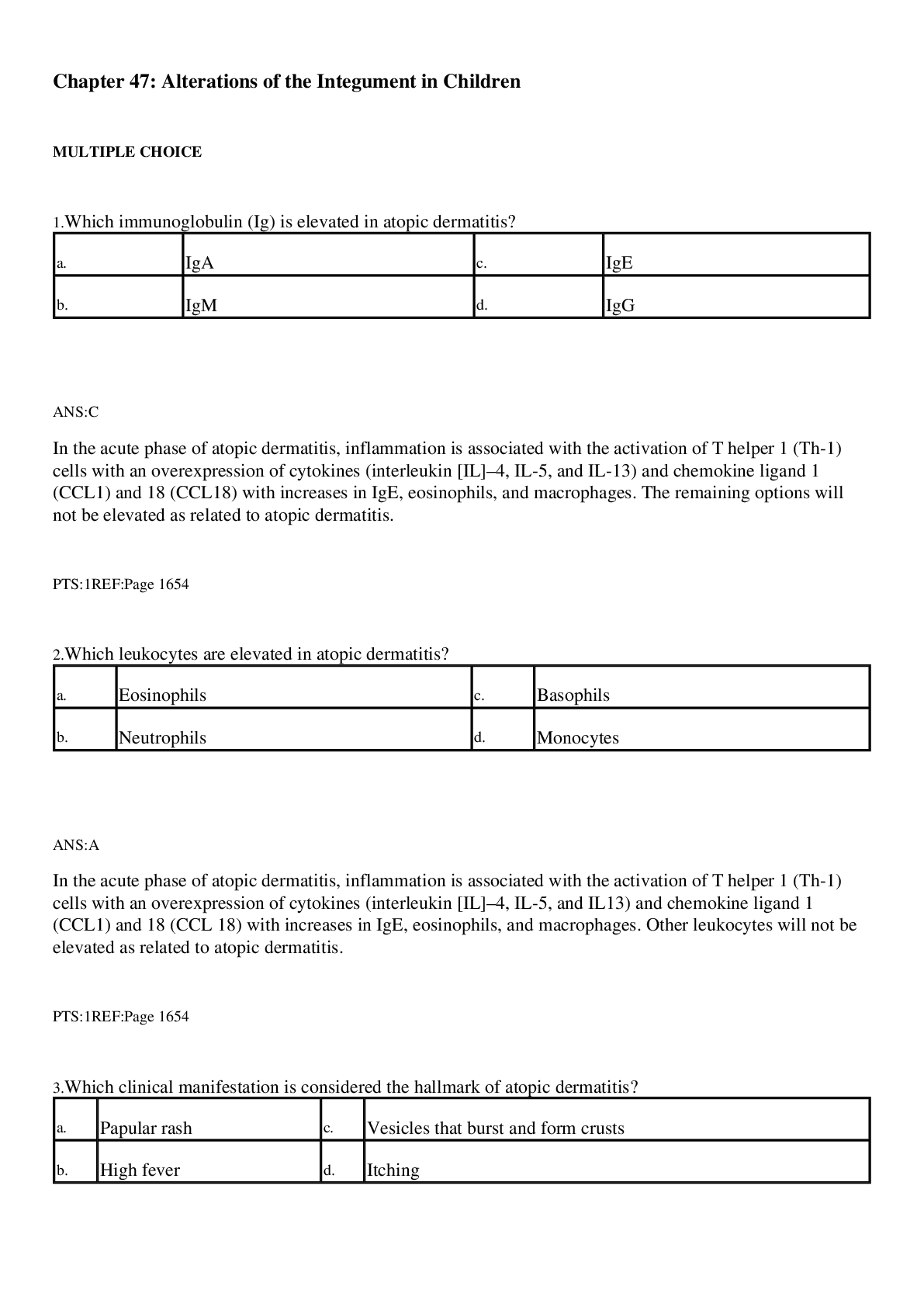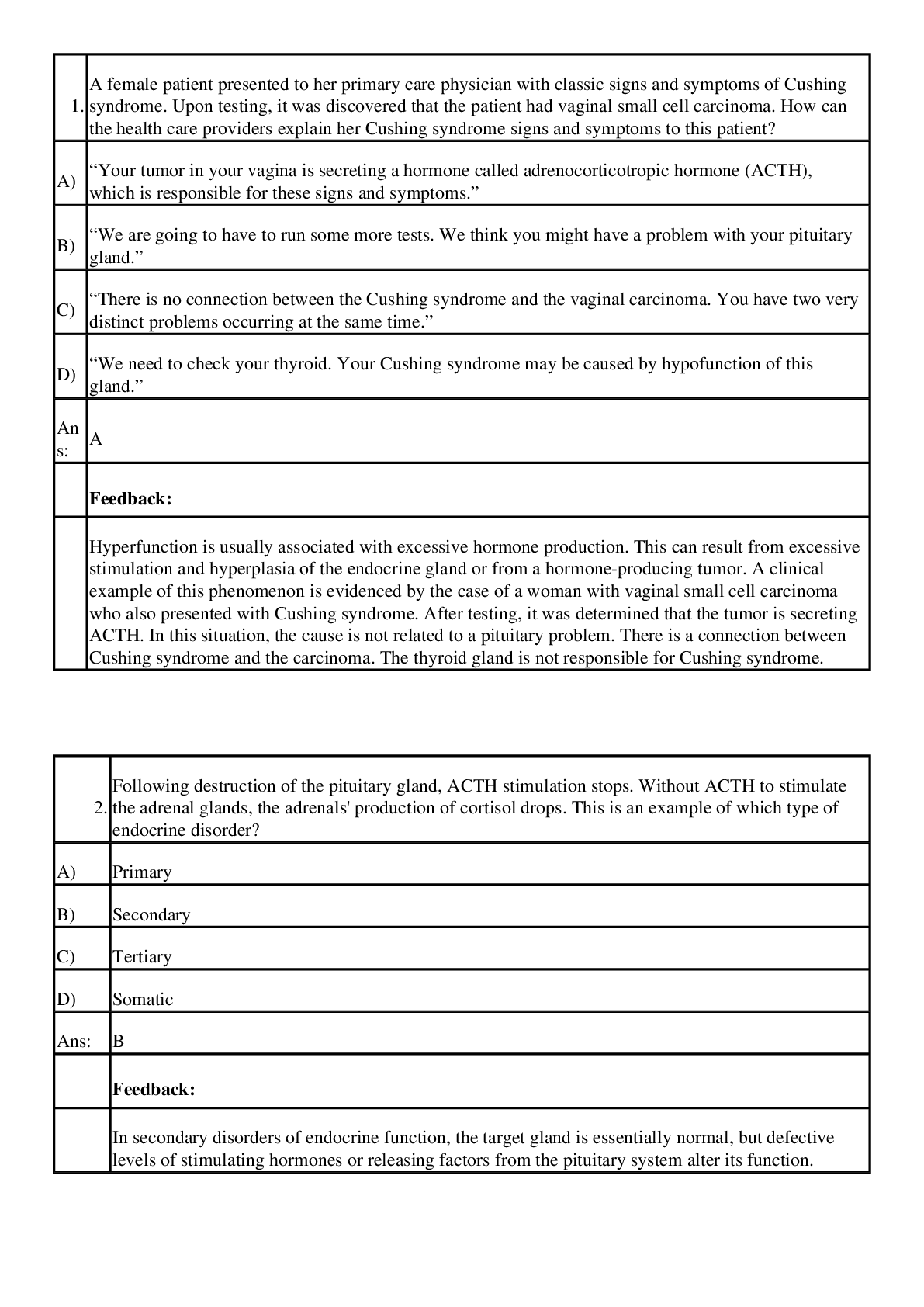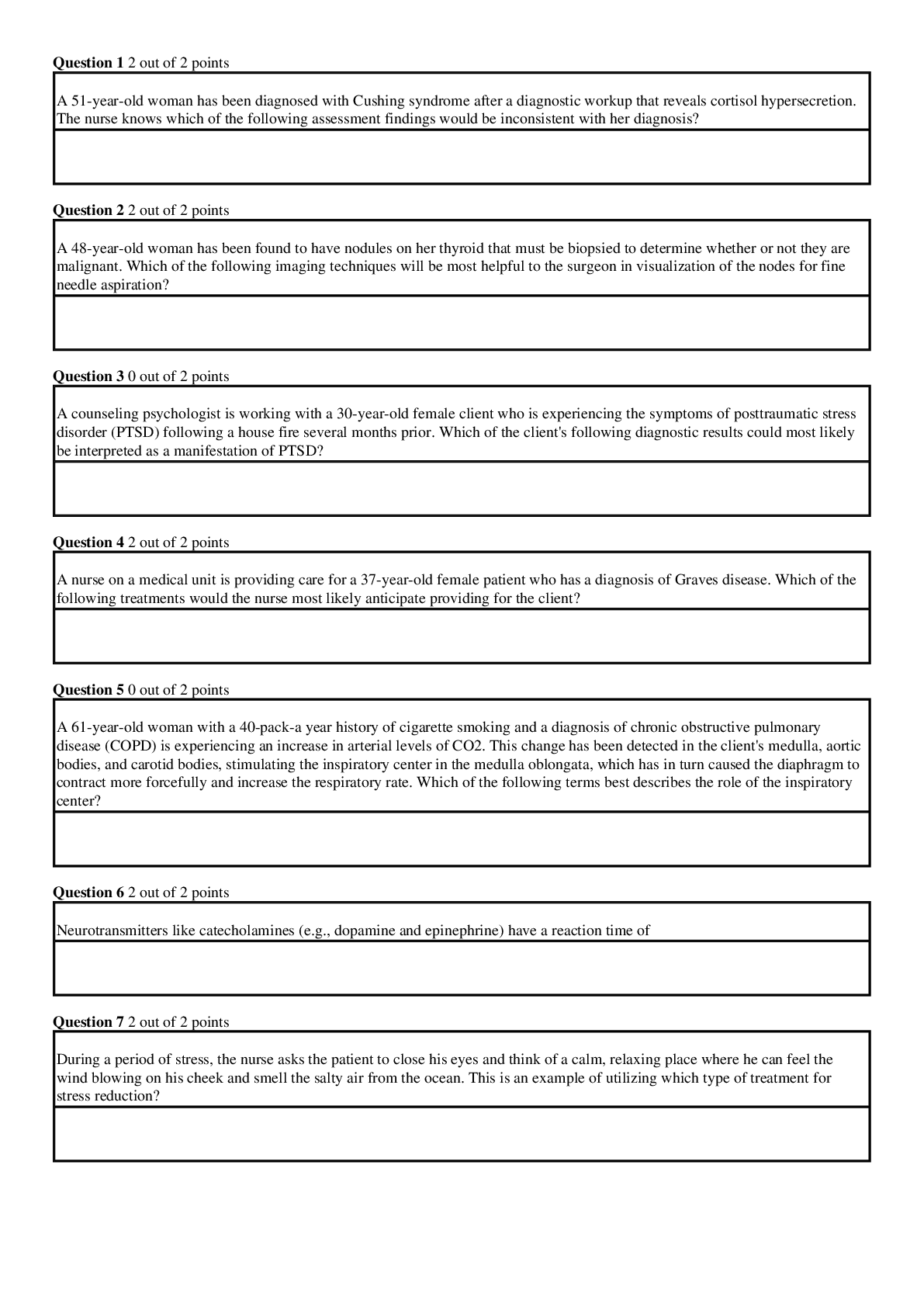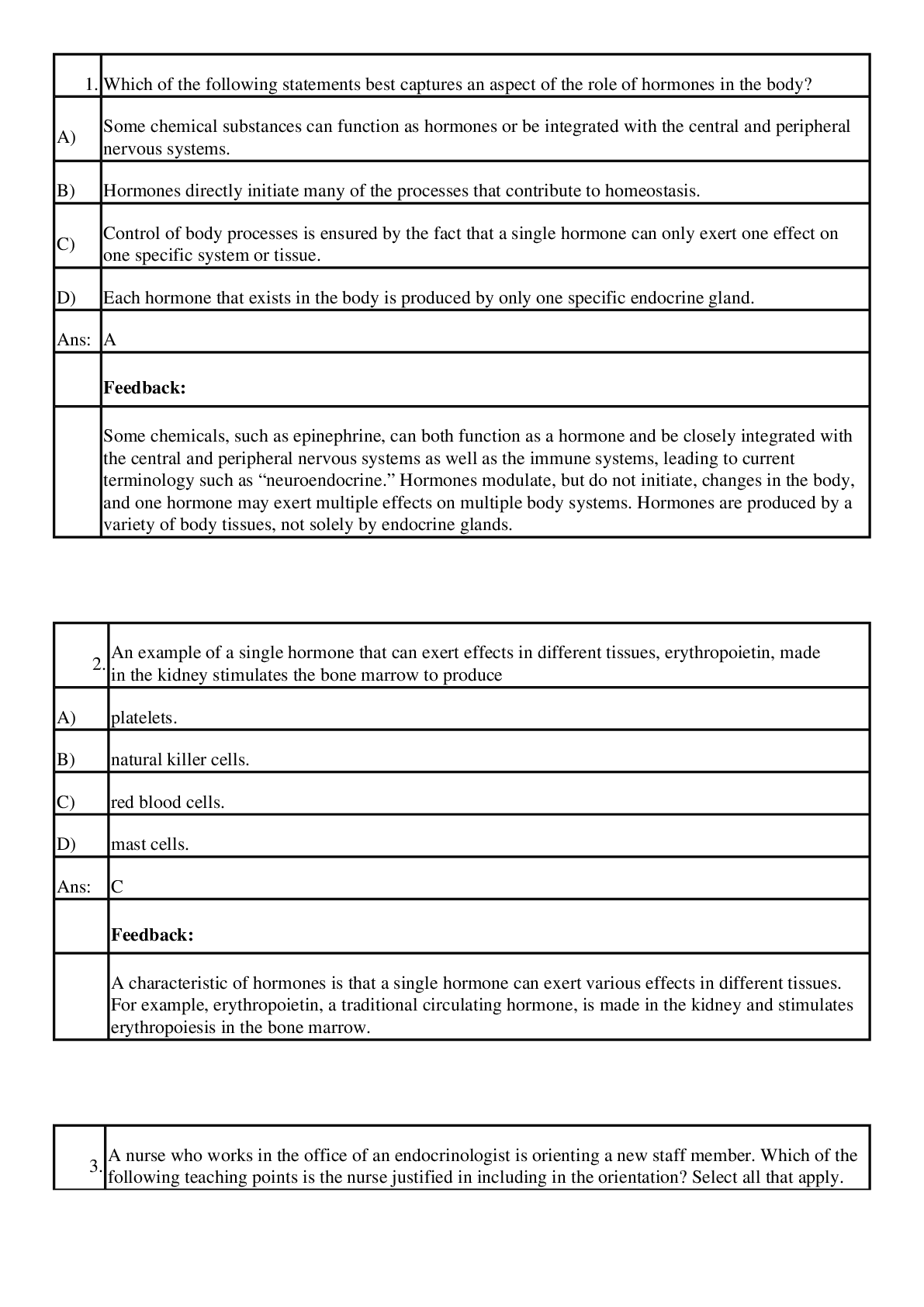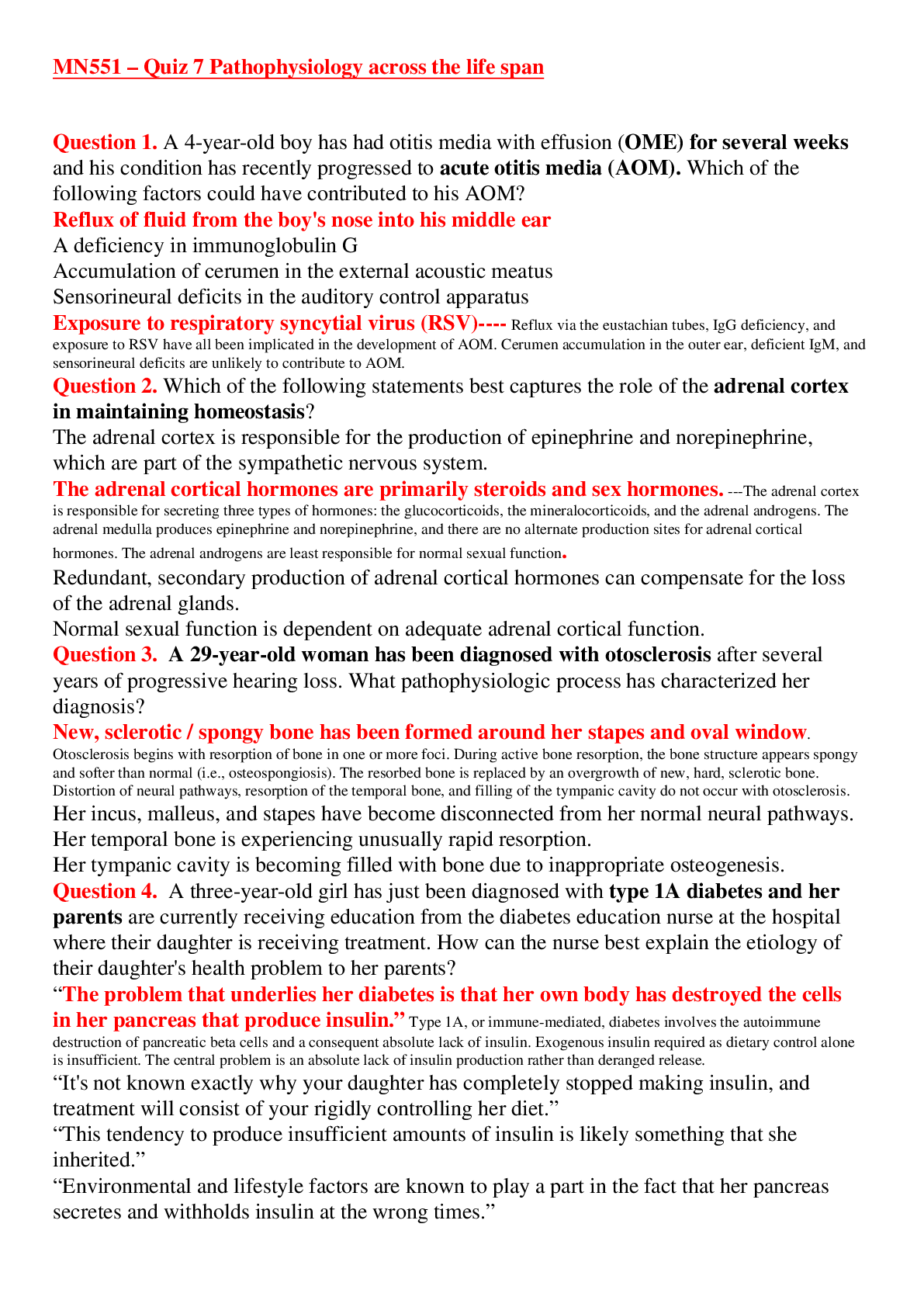Adult Health- Cardiovascular GRADED A VERIFIED
Document Content and Description Below
Adult Health- Cardiovascular 1. A client admitted to the hospital with chest pain and a history of type 2 diabetes mellitus is scheduled for cardiac catheterization. Which medication would need to be... withheld for 24 hours before the procedure and for 48 hours after the procedure? 1. Regular insulin 2. Glipizide (Glucotrol) 3. Repaglinide (Prandin) 4. Metformin (Glucophage) 4. Metformin (Glucophage) 2. The nurse is reviewing an electrocardiogram rhythm strip. The P waves and QRS complexes are regular. The PR interval is 0.16 second, and QRS complexes measure 0.06 second. The overall heart rate is 64 beats/minute. Which would be a correct interpretation based on these characteristics? 1. Sinus bradycardia 2. Sick sinus syndrome 3. Normal sinus rhythm 4. First-degree heart block 3. Normal sinus rhythm 3. A client is wearing a continuous cardiac monitor, which begins to sound its alarm. A nurse sees no electrocardiographic complexes on the screen. Which is the priority action of the nurse? 1. Call a code. 2. Call the health care provider. 3. Check the client's status and lead placement. 4. Press the recorder button on the electrocardiogram console. 3. Check the client's status and lead placement. 4. A client is having frequent premature ventricular contractions. The nurse should place priority on assessment of which item? 1. Sensation of palpitations 2. Causative factors, such as caffeine 3. Precipitating factors, such as infection 4. Blood pressure and oxygen saturation 4. Blood pressure and oxygen saturation 5. The nurse is evaluating a client's response to cardioversion. Which observation would be of highest priority to the nurse? 1. Blood pressure 2. Status of airway 3. Oxygen flow rate 4. Level of consciousness 2. Status of airway 6. The nurse is caring for a client who has just had implantation of an automatic internal cardioverter-defibrillator. The nurse immediately would assess which item based on priority? 1. Anxiety level of the client and family 2. Presence of a Medic-Alert card for the client to carry 3. Knowledge of restrictions of postdischarge physical activity 4. Activation status of the device, heart rate cutoff, and number of shocks it is programmed to deliver 4. Activation status of the device, heart rate cutoff, and number of shocks it is programmed to deliver 7. A client's electrocardiogram strip shows atrial and ventricular rates of 110 beats/minute. The PR interval is 0.14 second, the QRS complex measures 0.08 second, and the PP and RR intervals are regular. How should the nurse correctly interpret this rhythm? 1. Sinus dysrhythmia 2. Sinus tachycardia 3. Sinus bradycardia 4. Normal sinus rhythm 2. Sinus tachycardia 8. The nurse is assessing the neurovascular status of a client who returned to the surgical nursing unit 4 hours ago after undergoing aortoiliac bypass graft. The affected leg is warm, and the nurse notes redness and edema. The pedal pulse is palpable and unchanged from admission. How should the nurse correctly interpret the client's neurovascular status? 1. The neurovascular status is normal because of increased blood flow through the leg. 2. The neurovascular status is moderately impaired, and the surgeon should be called. 3. The neurovascular status is slightly deteriorating and should be monitored for another hour. 4. The neurovascular status is adequate from an arterial approach, but venous complications are arising. 1. The neurovascular status is normal because of increased blood flow through the leg. 9. The nurse is evaluating the condition of a client after pericardiocentesis performed to treat cardiac tamponade. Which observation would indicate that the procedure was unsuccessful? 1. Rising blood pressure 2. Clearly audible heart sounds 3. Client expressions of relief 4. Rising central venous pressure 4. Rising central venous pressure 10. A client with angina complains that the anginal pain is prolonged and severe and occurs at the same time each day, most often at rest in the absence of precipitating factors. How would the nurse best describe this type of anginal pain? 1. Stable angina 2. Variant angina 3. Unstable angina 4. Nonanginal [Show More]
Last updated: 2 years ago
Preview 1 out of 16 pages

Buy this document to get the full access instantly
Instant Download Access after purchase
Buy NowInstant download
We Accept:

Reviews( 0 )
$18.00
Can't find what you want? Try our AI powered Search
Document information
Connected school, study & course
About the document
Uploaded On
Jan 31, 2021
Number of pages
16
Written in
Additional information
This document has been written for:
Uploaded
Jan 31, 2021
Downloads
0
Views
88

